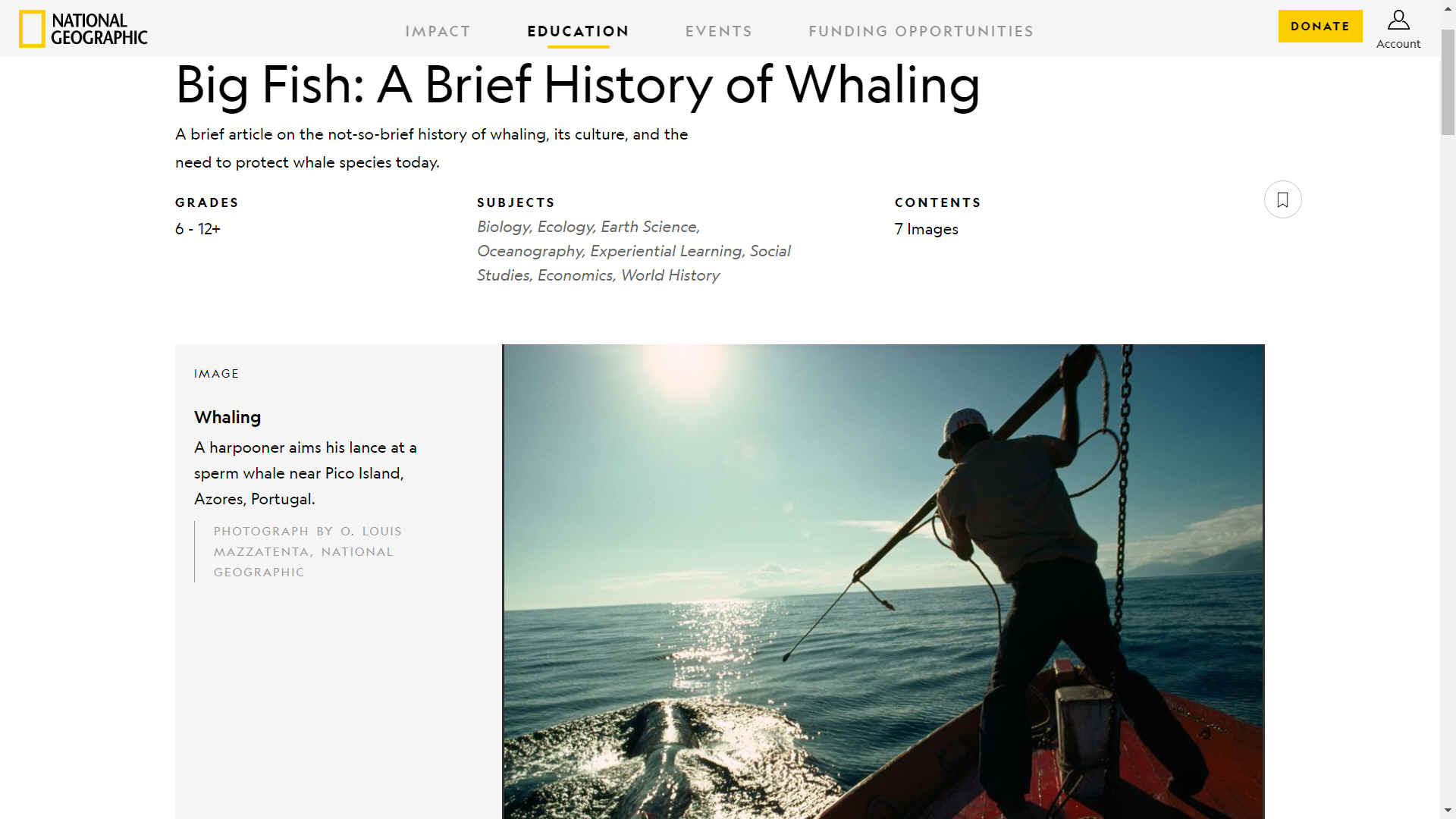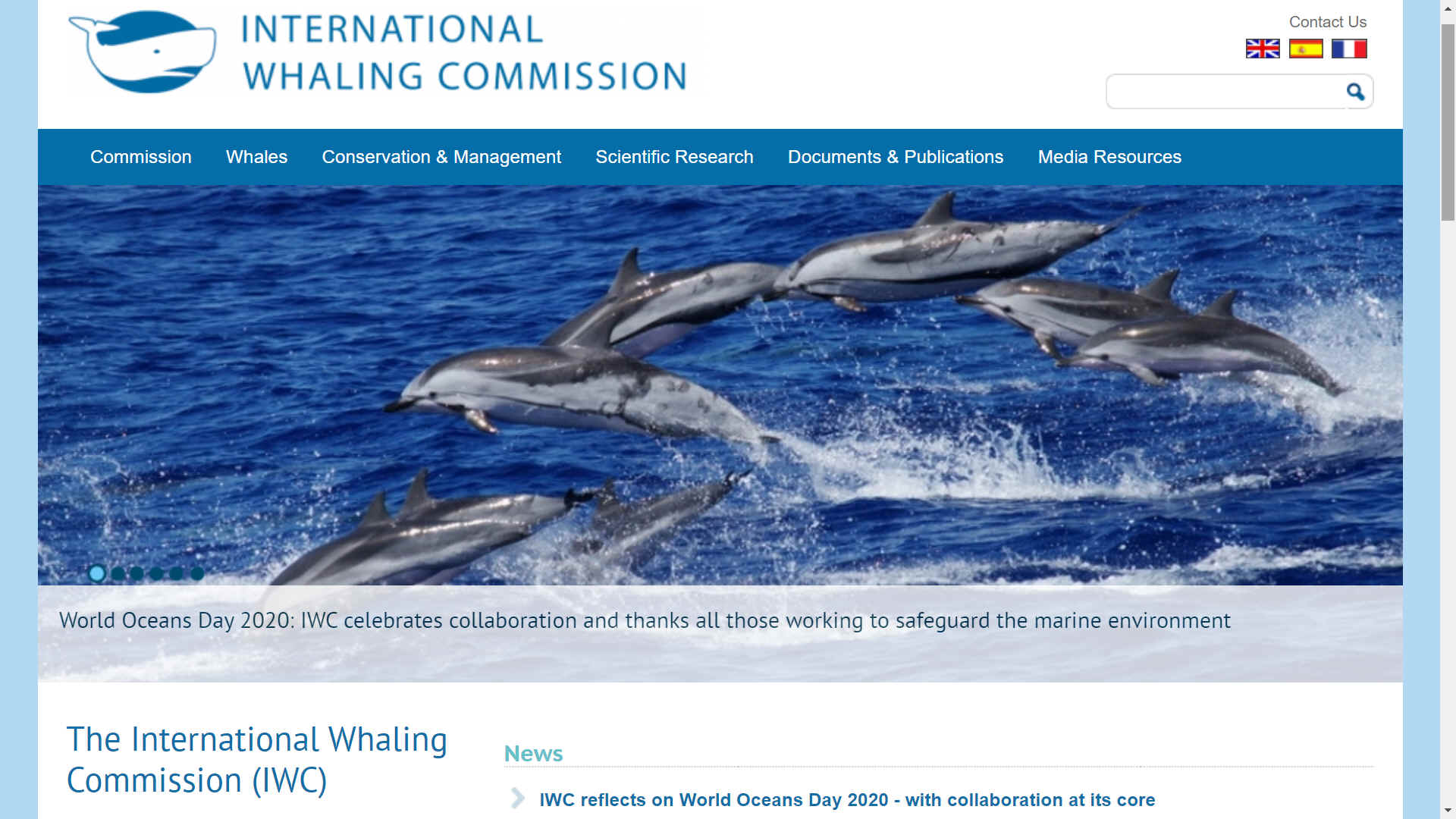
The National
Geographic Society has been keeping tabs on an publishing articles about
whaling for many years. Though this is an old article, most of what it
contains remains true today.
People have been whaling for thousands of years. Norwegians were among the first to hunt whales, as early as 4,000 years ago. The Japanese may have been doing so even earlier.
Traditions as varied as the Inuit (who hunted in the Arctic Ocean), Basque (who hunted in the Atlantic), and Japanese (who hunted in the Pacific) relied on whales to provide material goods, as well as part of their cultural identity.
Nearly every part of the whale was used. Meat, skin, blubber, and organs were eaten as an important source of protein, fats, vitamins, and minerals. Baleen was woven into baskets and used as fishing line. In warmer climates, baleen was also used as a roofing material. Bones were used primarily for toolmaking and carving ceremonial items such as masks.
During the Middle Ages and Renaissance, whaling gained popularity throughout Northern Europe. Whale oil and baleen (sometimes called whalebone, although it’s not bone at all) were valuable commodities. Whale oil comes from the blubber of right and
bowhead
whales, and the head cavity of sperm whales. It was used primarily for oil lamps. Corsets and hoop skirts were constructed from whalebone.
Whaling in America
Over time, European whaling ventures spread to North America. American colonists relied on whale oil to light most of their lamps.
By the mid-1700s, it became increasingly difficult to find whales near the Atlantic coast. The American whaling fleet expanded its operations throughout the world’s oceans, including the whale-rich waters of the Arctic and Antarctic.
Whaling in the United States hit its peak in the mid-1800s. New technologies, including gun-loaded harpoons and steamships, made whalers around the world more efficient. The American whaling fleet, based on the East Coast, operated hundreds of ships in the South Atlantic, Pacific, and Indian Oceans. Whaling was a multi-million dollar industry, and some scientists estimate that more whales were hunted in the early 1900s than in the previous four centuries combined.
Eventually, kerosene, petroleum, and other fossil fuels became much more popular and reliable than whale oil. The industry plummeted.
By the early 1970s, the United States had listed eight whales as endangered species. The U.S. officially outlawed whaling in 1971.
Whaling Today
In 1946, several countries joined to form the International Whaling Commission
(IWC). The IWC’s purpose is to prevent overhunting of whales. Its original regulations, however, were loose, and quotas were high. Whale stocks continued to decline.
The IWC eventually established whaling-free sanctuaries in the Indian Ocean (1979) and the ocean surrounding Antarctica (1994).
The IWC called for a moratorium on commercial whaling in 1982. Both Japan and Norway voted against this policy. Today, Norway supports hunting minke whales for meat. Japan allows whaling for scientific purposes, although many experts question if more whales are taken than are necessary. Meat from whales killed for research is sold as food.
Many species of whale have benefitted from the IWC’s moratorium. Dave Weller, a research biologist at NOAA’s Southwest Fisheries Science Center in La Jolla, California, says the eastern Pacific gray whale population has recovered.
“I think there is pretty good evidence that a moratorium on hunting has allowed certain populations to recover from depleted status when they were being whaled,” he says.
According to Weller, the IWC’s moratorium on whale hunting is one of two major steps the organization is taking.
“The other thing that the IWC has very successfully done is to collect information and provide analysis of data to help us understand the status of various populations that in some cases we knew very little about,” he says.
Despite the general moratorium, limited whaling is permitted to indigenous cultures.
“In the United States, the Inuit Eskimos in the north slope of Alaska, in Barrow, Alaska, still hunt for bowhead whales,” Weller says. “There is a request by the Makah Indian tribe, which is in northern Washington state, to resume gray whale hunting, which they had traditionally done. But that’s pending deliberations right now.”
Tribe of the Sea
The sea plays a large role in the culture and history of the Makah people, native to the Pacific coast of the U.S. state of Washington. Skilled mariners, the Makah carved specific canoes for each task. War,
whaling, salmon
fishing, sealing, and transporting cargo each required a different canoe.
In 1855, devastated by successive outbreaks of smallpox and facing pressure from the U.S. government, the Makah signed the Treaty of Neah Bay. Among other things, the treaty protected the tribe's whaling rights for future generations in exchange for 300,000 acres of tribal land. As of 2011,
NOAA is considering allowing the Makah to conduct limited hunting of the eastern Pacific
gray
whale.
By Meghan E. Marrero and Stuart Thornton

IWC is a voluntary
international organization and is not backed up by treaty, therefore,
the IWC has substantial practical limitations on its authority. First,
any member countries are free to simply leave the organization and
declare themselves not bound by it if they so wish. Second, any member
state may opt out of any specific IWC regulation by lodging a formal
objection to it within 90 days of the regulation coming into force (such
provisions are common in international agreements, on the logic that it
is preferable to have parties remain within the agreements than opt out
altogether). Third, the IWC has no ability to enforce any of its
decisions through penalty imposition.
LINKS
& REFERENCE
https://www.whalefacts.org/history-of-whaling/
https://www.nationalgeographic.org/article/big-fish-history-whaling/
https://www.nationalgeographic.org/article/big-fish-history-whaling/
Please use our
A-Z INDEX to
navigate this site

